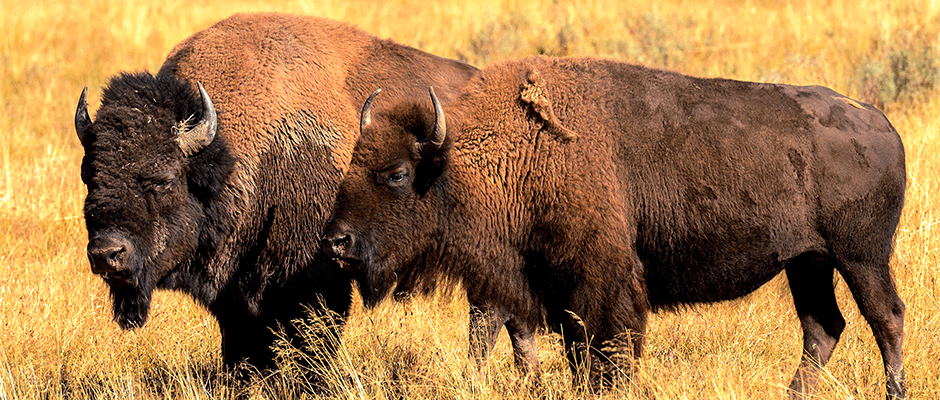Share this article
Yellowstone’s annual bison cull is underway
Yellowstone National Park has begun this winter’s bison cull, an annual event intended to help maintain an ecologically sustainable population of American bison (Bison bison) within the park and to prevent the possible spread of brucellosis from bison to cattle outside of park boundaries. A predetermined number of bison are removed from Yellowstone National Park every winter under the Interagency Bison Management Plan (IBMP).
This winter, the National Park Service expects that anywhere from 900 to 1,300 bison will be removed from Yellowstone. The Bozeman Daily Chronicle reported on Feb. 8 that the first 15 of over 400 previously captured bison held at Yellowstone’s northern edge had been placed in trailers to be taken to a slaughterhouse. Several hundred more will be processed within the next month. According to NPS, the bison meat and hides will be distributed among American Indian tribes.
Several of the captured bison were previously slated to be transferred to a new facility built by the Assiniboine and Sioux Tribes of the Fort Peck Reservation in Montana, a quarantine program developed by NPS and the Tribes as a non-lethal management option. The facility would hold up to 300 bison and, after brucellosis testing, would provide genetically-pure, certified disease-free animals for the establishment of new herds on tribal lands and elsewhere in the country. That plan has fallen through for the time being due to a dispute involving the state of Montana and federal officials over the possibility of brucellosis transfer to cattle owned by nearby ranchers.
Brucellosis is a contagious disease caused by a bacterial infection affecting ruminant animals and humans. In bison and cattle, brucellosis can cause abortion, infertility, decreased milk production, and weight loss. Brucellosis was recently found in a western Montana cattle herd, sparking fear throughout Montana’s beef industry. However, according to NPS, transmission of brucellosis from Yellowstone bison to cattle has not yet been documented.
As described in the cover feature on bison management in the Jan/Feb issue of The Wildlife Professional, NPS maintains that Yellowstone’s bison population needs to be actively managed. Careful management prevents overgrazing of the park’s vegetation, which could lead to mass starvation, and avoids greater bison-related conflict outside of Yellowstone’s boundaries. The state of Montana strictly limits how many bison can migrate into the state, and all bison intentionally transferred into Montana must first be certified as brucellosis-free by the state veterinarian in accordance with state law. NPS supports the effort to quarantine bison on the Fort Peck Reservation and to allow more bison to migrate into Montana in order to help manage Yellowstone’s bison population while reducing the need for capture and slaughter operations.
The IBMP aims to maintain a Yellowstone bison population of about 3,000 individuals. Currently, the park’s population is estimated at 5,500 bison and is increasing by 10% to 17% every year. Predation by wolves and bears has been mostly ineffective at controlling the bison population within park boundaries – NPS predicts that Yellowstone bison may eventually exceed the park’s carrying capacity if the animals cannot seasonally migrate into surrounding states.
The IBMP was originally adopted in 2000 through a collaborative effort between NPS, U.S. Forest Service, U.S. Department of Agriculture’s Animal and Plant Health Inspection Service, Montana Department of Livestock, and Montana Fish, Wildlife and Parks. The Confederated Salish and Kootenai Tribes, the Inter Tribal Buffalo Council, and the Nez Perce Tribe joined as partners in November 2009. The plan recognizes the value of multiple management techniques and allows for the use of slaughter “only when necessary” with an emphasis on employing alternative management techniques when possible.
Read TWS’ Standing Position on The Use of Science in Policy and Management Decisions.
Header Image: ©rwarrin








